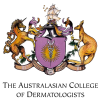One in five Australian children are obese, this is very concerning. However, obesity in children is largely preventable because healthy eating habits instilled in children while they are young. Are likely to remain with them throughout their life.
Here are some tips to help you ensure your child is eating healthy:
-
Healthy lunch boxes:
Wholegrain sandwiches with leftovers or deli meat such as tuna or salmon, vegetables with a healthy spread such a avocado and fetta. The meat can be alternated with eggs and the spread with peanut butter. The vegetables can either be included in the sandwich or as veggie sticks. The best way to pack the lunch is using a Bento lunch box. Dairy in some form should also be included as part of lunch such as yogurt or a snack pack of custard. -
Keep the pantry free:
As adults we find it hard to exhibit self control when it comes to unhealthy food, we should not expect our children to be able to restrain themselves. Ideally it is better to simply clear the cabinets of foods such as chips, chocolate, cakes and juices. This also means that as parents you yourself should not be consuming these foods. -
Portion control:
Supermarkets such as Coles and Woolworths sell portion controlled snacks. This ensures that at a point in time, your child may have a small bag of popcorn rather than a big bag or a 200 ml can of lemonade rather than the regular sized 375 ml can and not more than that in a day. -
Trial with different foods:
It can be challenging at first to ensure your child is covering all the different food groups especially if your child is a young toddler. The different food groups to cover include meat, fruits, vegetables as well as wholegrain breads and cereals. Your children may not eat all foods everyday. Often the tendency for children is to stick to particular foods that they like. Hence slowly introducing small quantities of different foods can be a good way to start. Examples of recommended servings for toddlers include 1 cup of vegetables, 1-2 pieces of fruit, 500ml milk or cheese or 2 small serves of meat such as fish, chicken and egg. Snack options can include fresh fruit, yogurt or rice cakes with vegetable topping. -
Eating patterns:
As much as possible children should have regular meals and snacks. Some kids may have smaller appetites. Hence they can be offered small amounts more frequently. If they feel hungry, they can ask for more. -
Get the kids involved:
Getting the kids involved in preparing food, even its something simple as washing fruits and vegetables or setting up the table. This enables children to have their own relationship with food and slowly develops good cooking skills as they get older. Taking your kids along with you for grocery shopping is also another way to familiarize them with different foods. -
Decorate food:
Decorating food into interesting shapes and sizes to make it visually appealing for your children. Is a great way to grab your child’s attention to meals.
Contact us for results focused nutritional advice
This article was written by our dietitian and nutritionist Juhi Bhambhaney. If you have any questions regarding health and nutrition, make an appointment with one of our dietitians. We‘ll provide you with a simple and effective routine targeted to your concerns. Contact us today.
The post Healthy Eating for Children appeared first on ENT Wellbeing Sydney.










